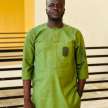The biggest Hoax in History.
It is a widespread misconception that individuals living in medieval times thought the Earth was flat. However, this belief is inaccurate and unfounded. The supposed battle between religion and science during this period is a myth.

The myth of a medieval flat earth has persisted since the time of Columbus, with some believing it was round or flat. This belief has been reinforced by the rise of the modern flat earth movement, which has been influenced by various sources. The first source is Washington Irving, an American author who wrote a fictionalized account of the history of New York. He argued that the church had historically stood in the way of scientific progress, and with the coming of Christendom, the light of reason was taken away and a dark age fell over Europe.
The myth of a medieval flat earth is largely attributed to the works of 19th-century novelist Washington Irving. He wrote a book about Columbus, which featured a scene where Columbus is trying to convince a council of wise men to sail west. However, the council was skeptical of his mathematical demonstration, as it was deemed useless if it clashed with the Bible. Some in the council believed in a flat earth, but the truth didn't matter, as Irving's account became a monster hit in the 1800s, influencing the public and many other writers.
The French scientist who introduced the idea that medieval people thought the earth was flat believed religion was to blame. He was influenced by an age-old movement that created the idea of the dark ages and the rule of the church and suppressing knowledge. Petrarch, an Italian poet, identified two times in history as an enlightened age and everything after the fall of the Western Roman Empire as a dark age. This light versus dark theme got a religious vibe during the Reformation, as Protestantism painted the Catholic Church in a negative picture.
When the idea of the Middle Ages as a dating device became popular in the 1600s, it became linked to the Dark Ages. These dark ages were initially described as a time with fewer written sources but later became a period of darkness and religious superstition. This middle time between an ancient and more enlightened period was seen as a time of return and scientific progress.
The authority of religion was further pushed by Enlightenment thinkers, such as Benjamin Franklin and Hume, who had a contempt for Christianity. They argued that all medieval people were ignorant and stupid, God-fearing and that religion and the pursuit of knowledge were a bad combination. The introduction of the flat earth in the 16th-century ties in seamlessly with the past, with the French Revolution now a time where revolutionaries break with superstitions from the past.
The text explores the history of science and its relationship with Christianity, focusing on the cosmographical opinions of the Church Fathers and the belief that all science has to be based on the Bible. The author, a decorated French historian, and geographer, argues that the flat earth myth and the myth of a Catholic Church fighting against real knowledge were based on three irresistible arguments: persecution, prison, and the stake. This idea is further supported by William Whewell, an influential figure who invented the word scientist and has a history of the inductive sciences.
Whewell introduces two Christian authors, Lactantius and Cosmas Indicopleustes, who were accused of Christian bigotry. Lactantius was attacking Greek ideas like the belief in a spherical earth, while Indicopleustes took the Bible literally and believed that the Earth was flat. These figures were fringe Christian scholars who were either ignored or attacked in their time for their views. However, Whewell presents them as the only voice of early Christianity, but they were just figures that no one took seriously.
John William Draper, a scientist who was the first to make a picture of the moon, also has a book called History of the Conflict between Religion and Science. He writes that religion and science have always been in conflict, with the Roman Catholic Church having a bitter animosity towards science and rejecting everything it couldn't find in the Bible. Draper's argument is persuasive because it is so simple: a plot of evil dogma versus the natural march of scientific truth.
Andrew Dickson White, another influential figure, publishes the history of the warfare of science with theology in Christendom. He argues that the early church fathers took fright at the idea that Earth was a globe and sought to crush the concepts with references to scripture. However, he concludes that science was so strong that by the late medieval period, various writers felt obliged to accept the rotundity of the Earth Saved there.
The conflict between religious and scientific ideas was not always the case. Early and medieval Christians believed that the Earth was a globe, but by around 500 before Christ, people like Pythagoras, Aristotle, and Euclid took this for granted. Augustine and early church fathers were very clear about the Bible, saying that stories are metaphorical and that we should look for moral truths in the Bible.
Bede believed that the Earth was round in a sense of a ball, and this idea was not only seen in medieval pictures of kings but also in books like The Divine Comedy Man, Neville's Travels, and the Canterbury Tales. This idea of the Earth as a globe was not new in the 1800s, and the invention of the word "scientist" was a significant development in the history of science.
The fall of the Western Roman Empire led to a breakdown of knowledge networks and exchanges in the area, but this did not mean stagnation or the church suppressing knowledge. Monks were reading and copying Greek and Roman authors, leading to the invention of sophisticated mechanical clocks, eyeglasses, effective gunpowder, and the printing press. The scientific revolution of the 1600s couldn't have happened without the massive translation of Greek, Arabic science, and natural philosophy into Latin.
Galileo, a medieval historian, was not persecuted for his views on the Earth as a globe. He believed in a heliocentric universe, which was outdated in his time. The Catholic Church was under a lot of stress, and his book insulted his former patron, the Pope. Galileo was put on house arrest and allowed to continue his research.
In the 19th century, religion for science people made the mortal mistake of projecting their age's experience to the whole of history. This led to a framework of warfare between science and religion that had to last forever. By the early 20th century, historians were talking about the medieval period, where everything of value seemed to sink and only light and worthless rubbish came floating down the stream of time.
In our time, there is a kind of war between science and religion going on. The Arkansas House has approved legislation that would allow educators in the state to teach creationism in science classes as one of the possible origins of the earth. The Roman Catholic Church has accepted the fear of evolution since the 1950s.
The way history is treated often says more about our time than the actual history. Projecting our modern views and anxiety back into history is not going to help us understand it any better. Humans have a tendency to be smug about the time they're living in, believing that the Earth was flat. This connects to the idea that many people share the idea of history as linear, moving towards a better world. However, the definition of a better world is something no one seems to agree on.
In conclusion, the myth of the flat Earth and the ongoing conflict between religion and science is false. By studying history and learning new skills, we can improve our personal and professional lives.
About the Creator
Ade Bimfo
Facts, Physiology, Mystery, News, Football, and anything interesting.
Feel free to suggest topics for me to cover in my posts. I'll do my best to provide interesting and informative content. Enjoy reading!






Comments
There are no comments for this story
Be the first to respond and start the conversation.